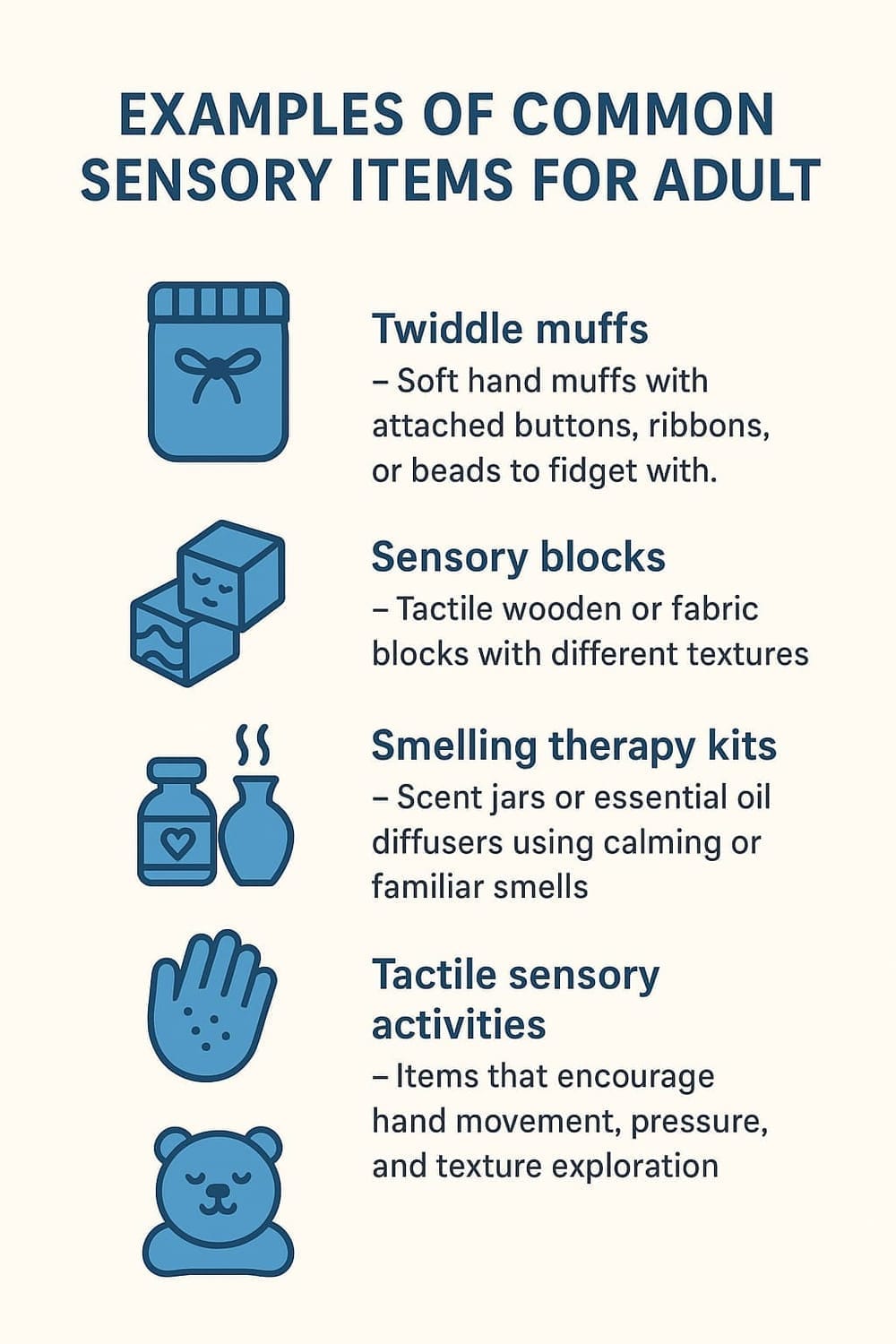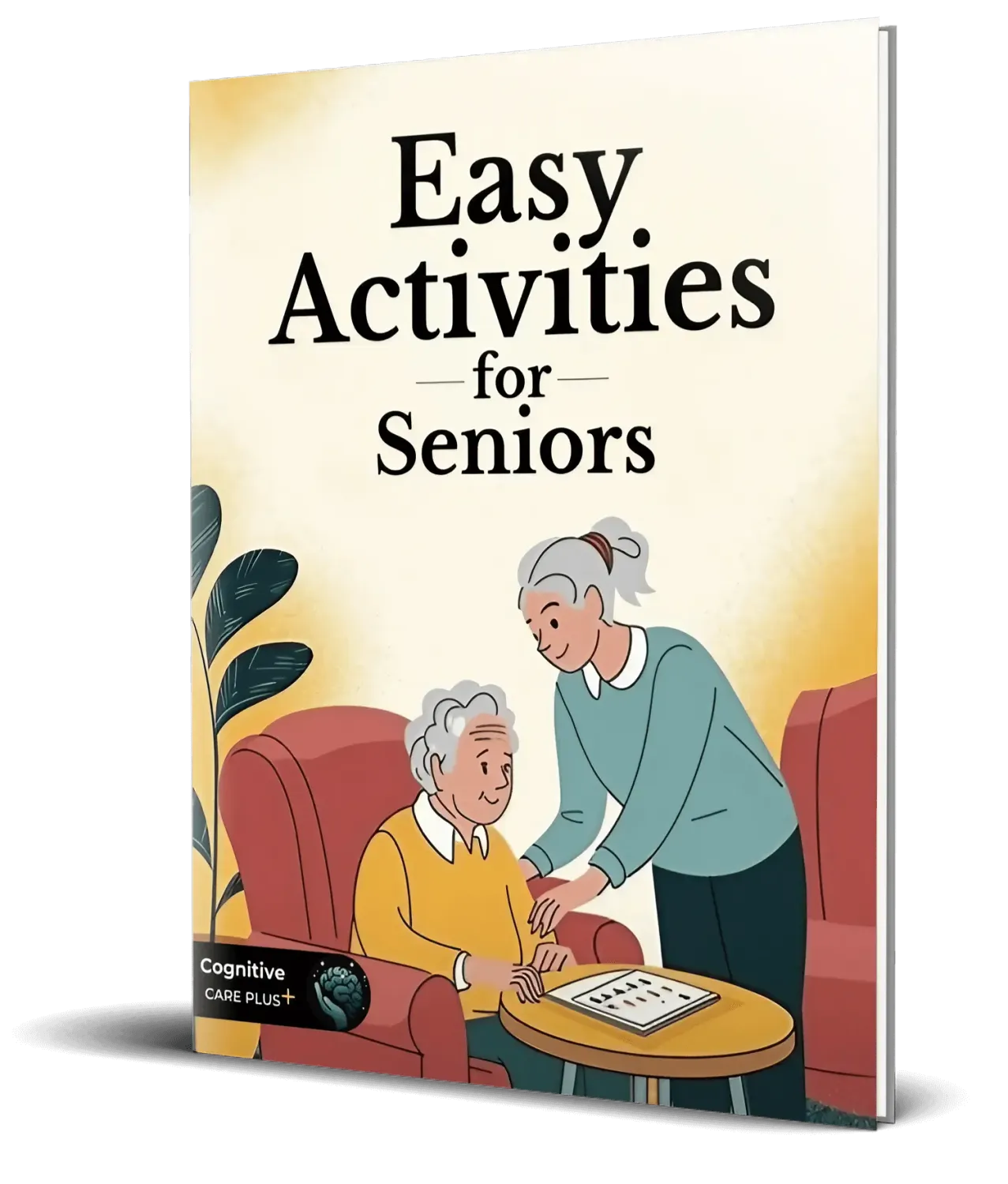Sensory Toys for Adults with Dementia: A Complete Guide
Are Sensory Toys Just for Kids? Think Again.
Imagine holding a soft fabric that warms your hands, listening to a gentle crinkle, or catching a calming scent of lavender. For many adults living with dementia, these simple experiences can spark joy, reduce agitation, and bring them back to the present moment.
Sensory toys for adults aren’t childish—they’re powerful therapeutic tools that support cognitive function, reduce anxiety, and promote emotional well-being. In this guide, we’ll show you how to choose the right sensory items for adults, why they work, and how they support brain health.
🎧 Prefer to listen? Play our podcast episode below to learn how sensory toys can reduce anxiety, boost memory, and bring joy to adults living with dementia—one touch at a time.
✨ Enjoyed the episode?
Subscribe to the Cognitive Care Plus Podcast for practical guides, expert insights, and compassionate support to help you care for your loved one with dementia.
What Are Sensory Toys for Adults?

Sensory toys for adults are designed to stimulate one or more of the five senses—touch, sight, smell, hearing, or taste—while promoting engagement and comfort. For people with dementia, they offer a way to reconnect with the world through safe, repetitive, and often soothing experiences.
These toys are not just playthings. They are therapeutic aids grounded in principles of neuroplasticity and occupational therapy.
Examples of Common Sensory Items for Adults:
Twiddle muffs – Soft hand muffs with attached buttons, ribbons, or beads to fidget with.
Sensory blocks – Tactile wooden or fabric blocks with different textures.
Smelling therapy kits – Scent jars or essential oil diffusers using calming or familiar smells.
Tactile sensory activities – Items that encourage hand movement, pressure, and texture exploration.
Weighted lap pads or stuffed animals – Promote calm through deep pressure stimulation.
Why Are Sensory Toys Important for People with Dementia?
Dementia can disrupt the way the brain processes sensory information. This may lead to confusion, restlessness, or withdrawal. Sensory toys help bridge that gap, gently inviting the person to interact, explore, and feel more at ease.
In fact, a systematic review on multisensory stimulation in dementia rehabilitation found that engaging the senses through touch, sound, and visual elements can significantly enhance emotional regulation, attention, and participation in daily activities.
🎥 See it in action: This short video by Covenant Health Canada shows how busy blankets help calm residents with dementia through soothing sensory engagement.
Top Benefits:
🌟 Reduce agitation and anxiety
🌟 Improve mood and social interaction
🌟 Encourage fine motor skills
🌟 Support memory recall through scent and touch
🌟 Promote neuroplasticity and exercise for the brain
🧠 Did you know? Sensory stimulation supports neuroplasticity, the brain’s ability to form new connections—even in older adults with cognitive decline.
How to Choose the Right Sensory Toy for Your Loved One
Every person with dementia is different. What calms one may overwhelm another. Here are some tips for choosing the right sensory items for adults:
✅ Consider Their Stage of Dementia
🧠 Not sure what stage they’re in?
Use our free Dementia Stages Assessment Tool to better understand your loved one’s needs and choose the right sensory toys with confidence.
Early stage: May enjoy puzzles or textured balls.
Middle stage: Respond well to fidget blankets or twiddle muffs.
Late stage: Benefit from soft, comforting textures and gentle smells.
✅ Prioritize Safety and Simplicity
No choking hazards
Easy to grip and clean
Non-toxic materials
✅ Match Their Personality
Former gardener? Try smelling therapy with herbs.
Loved textures? Go for sensory blocks or fabrics like fleece and velvet.
Enjoyed crafting? Choose tactile sensory activities with buttons or zippers.
Not sure where to begin? We’ve gathered a curated list of recommended sensory toys for adults to help you find options tailored to your loved one’s needs.
Integrating Sensory Toys into Daily Life
You don’t need a therapy room or special setup. Here are simple ways to make sensory play part of your routine:
🎵 Add tactile activities during quiet music time
🛋️ Place a twiddle muff in their lap while watching TV
🌸 Use smelling therapy during morning grooming or bedtime
🧱 Stack sensory blocks after meals to aid digestion and focus
If you're looking for more practical tips on everyday sensory stimulation, this caregiver-friendly guide from Salmon Health offers helpful ideas on how to incorporate touch, smell, sound, and more into a daily care routine.
Small, regular interactions can lead to big improvements in mood and behavior.
FAQ
Twiddle muffs, textured mats, scented items, and sensory blocks are all highly recommended depending on the person’s stage and preferences.
Yes. Engaging the senses promotes neuroplasticity and exercise for the brain, which helps maintain function longer and boosts emotional connection.
They can be, if selected carefully. Focus on simplicity, avoid small removable parts, and supervise during use if needed.
Final Thoughts: It’s More Than a Toy—It’s a Connection
In dementia care, connection is everything. Sensory toys open new paths to communicate, calm, and care—without needing words. They are a gentle reminder that comfort, joy, and dignity can still be present, even in the face of memory loss.
Whether you’re a caregiver, family member, or health professional, including sensory activities in daily routines can make a world of difference.
💙 At Cognitive Care Plus, we’re here to help you find meaningful ways to support your loved one—one touch, one scent, one moment at a time.
👉 Looking for more engaging ideas for seniors? Explore all our categories to find activities, sensory tools, and brain-boosting resources for every stage of dementia care.
Share this article:
If this article helped you, share it with other caregivers who need encouragement.
💬 We’d love to hear from you!
Have you introduced sensory toys into your loved one’s daily routine? Which types of items have been most effective in reducing anxiety or promoting comfort? What challenges have you faced when choosing or using these tools? Share your experiences in the comments—your insights could help other caregivers discover helpful resources and feel more supported on this journey.

Trending
Simple tools that make caregiving...
Turning simple play into a brain-boosting activity...
Here’s what to look for when choosing...

About me

Hi there 👋 My name is George Cassou, I'm a psychologist and the creator of this blog. Inspired by my journey caring for my mom with Alzheimer's, I share activities and tips to bring joy and connection.

Affiliate Disclosure:
This website contains affiliate links. If you click on these links and make a purchase, we may earn a small commission at no additional cost to you. These commissions help us keep this site running and allow us to continue creating helpful content to support caregivers and families.


